Why Belgian beer tastes different (and better) in Belgium
By Daniel Fallon
‘Whoosh!’
I feel the wind of the passing vehicle before I see the back of a young woman race by on a bicycle. She is not alone – there is a constant stream of youthful commuters pedalling in all directions around me, expertly dodging mid-square obstacles such as myself with barely the warning ring of a bell.
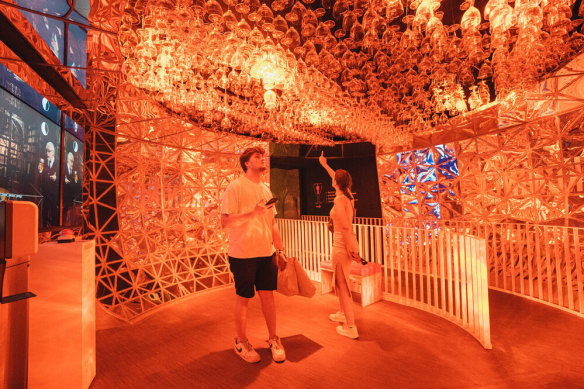
De Koninck Brewery
Never mind, the Belgian pilsner that I’ve just imbibed – commonly known around the world as Stella Artois – has had a calming effect on my nerves. We’ve just stepped out from the chic bar at Martin’s Klooster Hotel – our accommodation. What was originally a monastery built in 1531 now accounts for a luxurious establishment in the heart of Leuven in central Belgium. There, sharply dressed barmen deliver trays loaded with the crispest Stella I’ve ever tasted.
“It is all about the water,” Jo Maes, my Belgian travelling guide and drinking mate, says in response to my wonderment as we make our way to another restaurant and bar for dinner. “Water is different everywhere you go. They licence the beer to be manufactured and distributed around the world, but it tastes differently because the water is different at every location.”
Jo, who reminds me of the late Telly Savalas, is leading us on an epic tour across Belgium’s northern region of Flanders and beer is featuring heavily between rounds of golf. Jo lived for a period of his youth in Leuven, which is also the home of Stella Artois. Here, bartenders are taught a nine-step ritual to pour beer with the perfect frothy head (three-centimetres) and get the presentation just right.
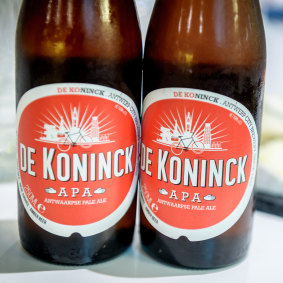
Local brew De Konnick.
Brewing bevvies goes back a long way in Leuven. The Den Hoorn Brewery began the magical art of turning barley, hops, yeast and water into bitter amber liquid in 1366. Sebastian Artois started as Brew Master there in 1708, lending his name to the now famous drop. While the original brewery has been abandoned, you can book a Saturday tour of the modern facility, which is now owned and operated by international brewing giant AB InBev.
I can’t think of a better place to sell beer. Leuven is buzzing with youthful vibrancy – I have never experienced anything like this. Teenagers and 20-somethings eagerly make their way, no doubt heading to rowdy student parties and heaving discotheques.
“They’ve just returned for the start of university – Leuven University is one of the oldest in Europe,” Jo says. “It’s party time.”
Apparently, they have been partying here since 1425, when the ancient school first opened its doors.
I turn my attention to a nearby Belgian chocolate shop that features two young people draped in the open windows of an apartment above. As I point my camera at the scene, they call out to me in a stream of Flemish, stopping my photography. I sense they are protesting against the photo opportunity and I don’t want them to lose their balance. I wave and do a good impression of a confused tourist. “Dank je!” I yell – “thank you” are two of my few Flemish words.
“Cheers” is another or Sante! I’m getting thirsty again.
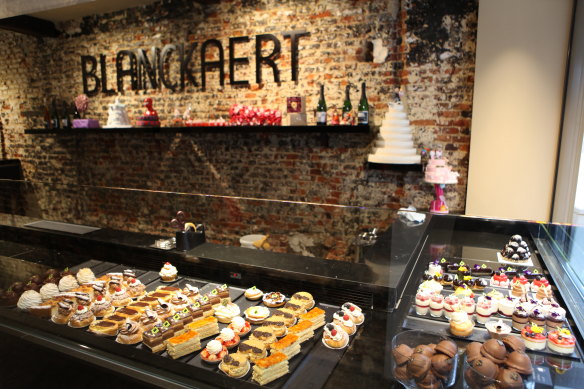
Patisserie Blanckaert Tongeren Brussels
Belgium is a dream destination for beer lovers – that is not a secret – but I am thankful to be living the dream, one pint at a time. The European nation has a rich brewing tradition rooted in small, family-run breweries, many of which opened for business centuries ago. It seems as though every town we visit in our minibus, there is a quaint village centre filled with ancient restaurants, a classic cathedral-like Catholic church and a local brewery that supplies a variety of drops. Leaving the giant brands behind – often flavourless options for the mass market – you can explore a whole new world of beer. As I discover, it’s best to be brave – these are some the tastiest beverages that I’ve consumed.
While more Belgium breweries have been bought and their beers exported, it is hard to recreate the same taste from the same recipe outside of the European nation, according to Jo.
″We have a small village of 2000 people – we have a brewery,” he says. “Well, every village had their own beer, their own brewery. When they got bought up by bigger breweries, obviously the brewing process took place somewhere else. But in order to recreate the taste of that particular beer of that village, they had to recreate the taste of the water - the PH and all that kind of stuff. Otherwise, the beer would never taste the same as it was brewed in the village.”
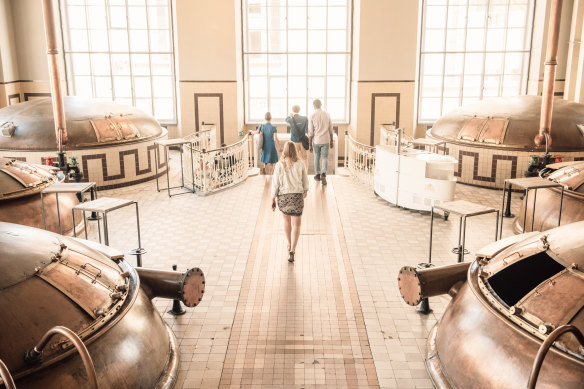
De Hoorn Brewery.
Despite the takeovers, Belgium has enjoyed a resurgence in microbreweries – part of a world-wide trend that stretches from San Francisco to Sydney. There are well over 200 active breweries and many of them offer tours and tastings. While some have been bought out by the brewing giants such as AB InBev, many are small or family-run businesses that retain their regional identity and supply the local bars and restaurants in their village.
“Now it has all become a lot more industrial and a lot of the small craft beers have disappeared – but they are coming back,” Jo says. “Some guy finds a recipe for a beer and starts making it in small batches.”
Jo relates the story of Hoegaarden – a town about an hour’s drive east of Brussels – where former milkman Pierre Celis decided to rebrew an ancient recipe for white beer in 1966 after the other local breweries had shut down. Demand for the brew – which used orange peel as an ingredient and added living yeast to the kegs and bottles – caught on and before long he was bought by a much bigger brewing company.
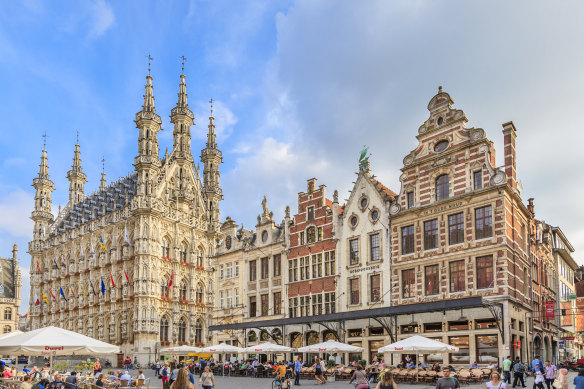
The Grote Markt, the major town square of Leuven, a Flanders university city.Credit: iStock
“He decided to revive it and made Hoegaarden a beer, which ferments in the bottle – that’s why it’s cloudy,” Jo says. “It’s a massive success. You can find Hoegaarden everywhere.”
I’m a huge fan of the fruity taste of Hoegaarden, and its style of wheat beers, so I’m glad it made a comeback.
Our tour across Belgium has led us to the beautiful river port city of Antwerp, the capital of Flanders in north Belgium. In a homely restaurant on the banks of the Scheldt River, we sip on De Koninck Bolleke – a deep amber Antwaarpse pale ale (ABV 5.20) that is rich and full-bodied and served in a chalice-shaped glass. De Koninck is a famous city brewery that you can also tour.
We chase that with a Maredsous Abbaye – Abdij Triple 10 (ABV 10 per cent), a deep amber abbey beer that is strong and smooth with a slight tangy twist at the end of each sip.
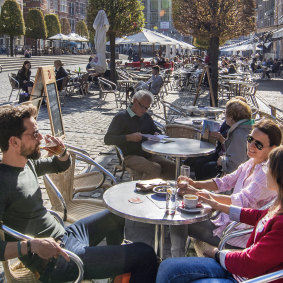
Leuven Oude market.
Fortunately, for self-preservation, food is never far from my mind on this trip. Every drink is accompanied by bottles of sparkling or still water and generous servings of local specialties, such as steak tartare (mince mixed with herbs and capers) or frieten (fries), made with fresh local ingredients.
The variety of beer in Belgium is impressive. It seems you can find every type of beer thanks to the mix of boutique and giant breweries. You can enjoy pilsner, lager, bock, blonde ales, wheat beer, India Pale Ale and sour and fruity lambic (which is fermented through wild yeast). Then there are the cherished Trappist and Abbey beers.
While both types of are connected to Catholic orders, their method of distribution is different, Jo explains. An abbey can licence the rights to large breweries to make beers that carry its name in exchange for royalties, although there is still an historical connection with the abbey site and the recipe is followed. That means they can get a much wider distribution – you’ll find these beers on tap at bars and restaurants throughout Belgium.
In contrast, the Trappist monks brew their beers on-site at the monastery and only sell enough to cover their living costs. You generally have to visit the Trappist monks to buy their beer (limited to two 24-beer crates per visitor) and customers are not allowed to on-sell their beers. The monks also produce cheese, bread and other products to sample. You can join a hiking or cycling tour that includes one or more of the five Trappist abbeys in Belgium. Enthusiasts might choose the Lonely Monks Trappist Tour, which takes in all five Trappist breweries, another that lost its Trappist designation in 2021, plus two in The Netherlands via luxury coach.
“There are 14 recognised Trappist breweries and most of them are in Belgium,” Jo says. “So the Abbey beers can be brewed by big companies, the AB InBevs, according to a recipe. But the Trappist beers are effectively brewed in the abbey by the Trappist monks.”
A tasty tour of the Trappist abbeys sounds like a blessed mission that any beer lover would enjoy. Thank God for designated drivers and minibuses.
The amber trail – four Belgium experiences for beer lovers
Trappist abbeys
The Lonely Monks Trappist Tour will take you to all five Trappist breweries in Belgium plus two in The Netherlands on a luxury coach. The monks offer rare and much sort-after brews made from ancient recipes. Thank God for designated drivers. See belgianbeerme.com/lonely-monks-trappist-tour
Stella Artois – Leuven
For 8,5 euro ($13.25) on Saturdays, you can learn about how Stella Artois is made at the brewery in the ancient university city of Leuven. You might have a couple of glasses of the world-famous pilsner, too. They taste better than anywhere else here. See visitleuven.be/en/stella-artois
Antwerp Pub Crawl
The Cathedral of Our Lady is one of the grandest in the world (the gothic masterpiece took some 170 years to build). After taking in this architectural wonder, you can also visit some of Antwerp’s ancient pubs – there are hundreds to choose from in the centre of this medieval port city. Or head to De Koninck Experience Centre for a tour that explains how they make popular local brew, Bolleke. See dekoninck.be/en/interactive-tour
Liefmans fruity drops
The story of secretary turned brew master Rosa Merckx is something take in as you tour the Oudenaarde brewery. Then sample Liefmans fruity beverages as you look over the River Scheldt. See liefmans.com/en/brewery
THE DETAILS
FLY
Airlines connect to Brussels with one stop in the Middle East, including Etihad, Emirates, Qatar, Virgin Australia and Qantas. See qatarairways.com etihad.com; emirates.com; virginaustralia.com; qantas.com
STAY
Martin’s Klooster Hotel, Leuven, was formerly a monastery built in 1531. Now the converted four-star hotel attracts travellers to the heart of Leuven with its outstanding service and modern and luxurious interiors. Rooms from $155 a night. See martinshotels.com
TOUR
For €8,5 ($13.25) on Saturdays, you can learn how Stella Artois is made at the brewery in the ancient university city of Leuven. See www.visitleuven.be/en/stella-artois
MORE
The writer travelled with assistance from Golf in Flanders as a member of European Golf & Travel Media Association.
Sign up for the Traveller Deals newsletter
Get exclusive travel deals delivered straight to your inbox. Sign up now.